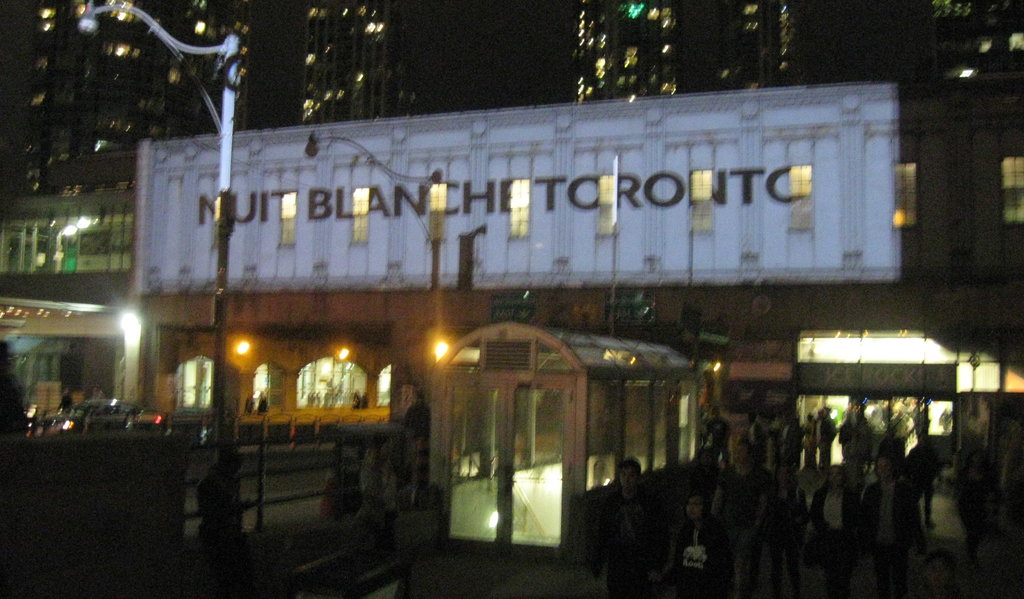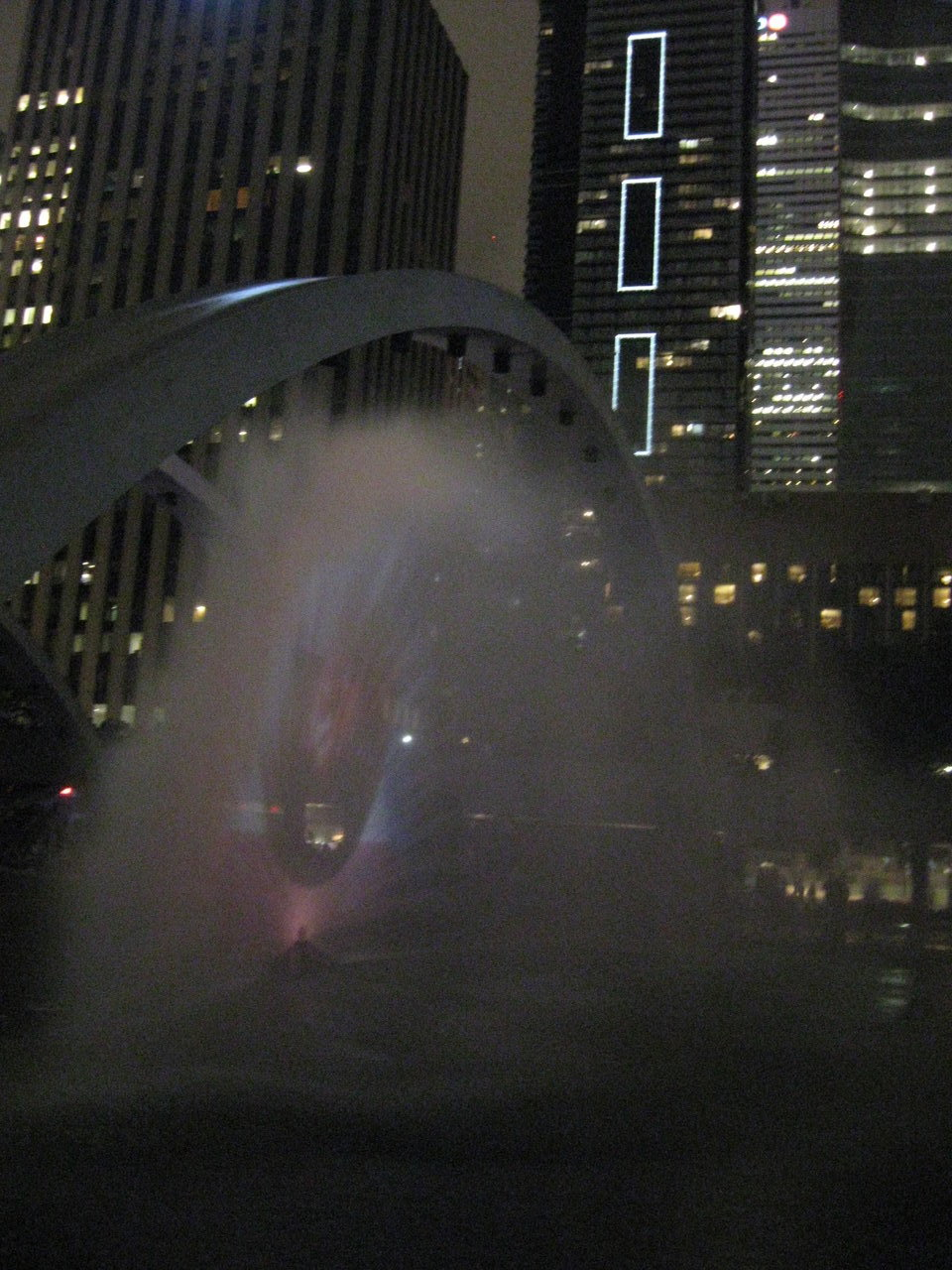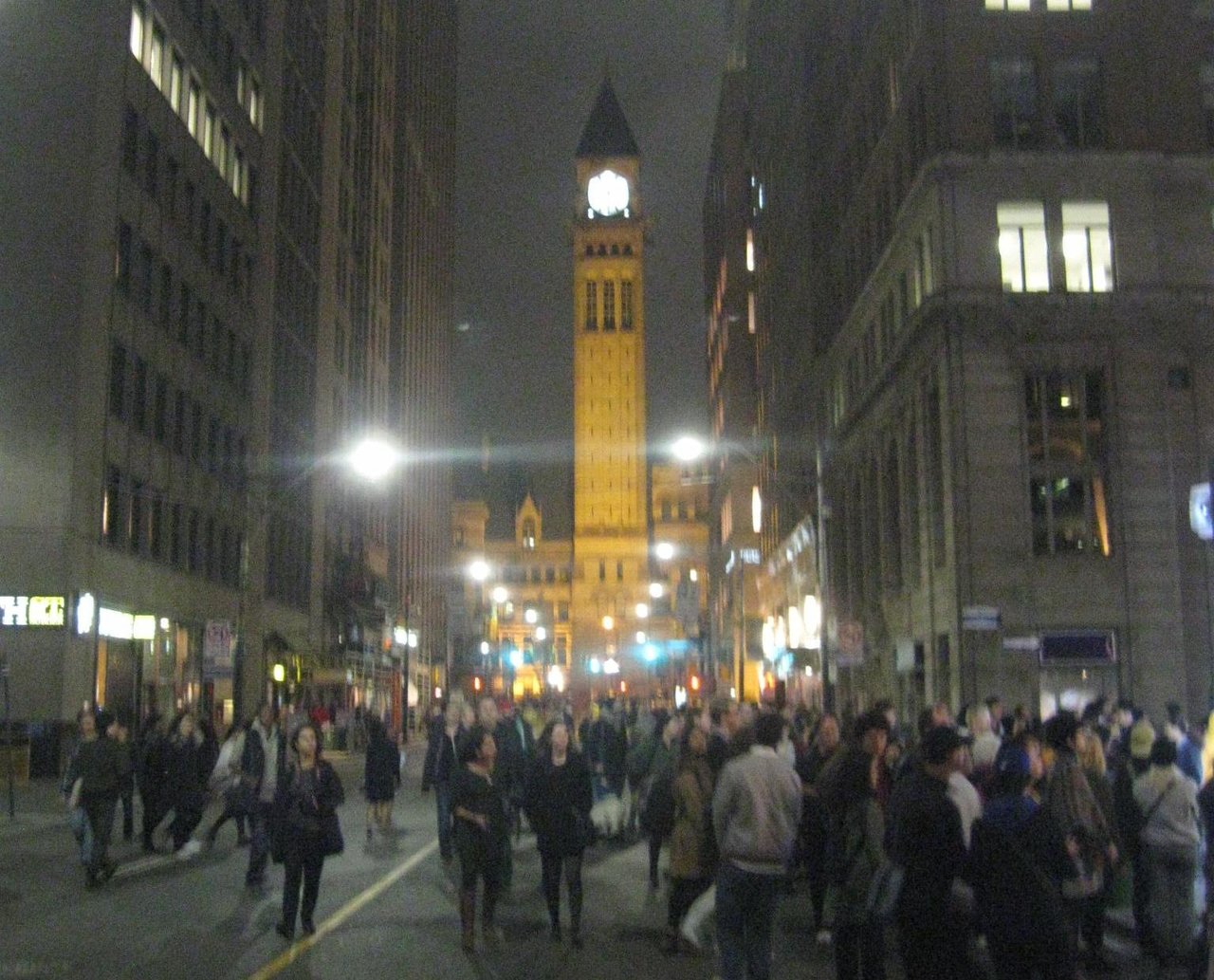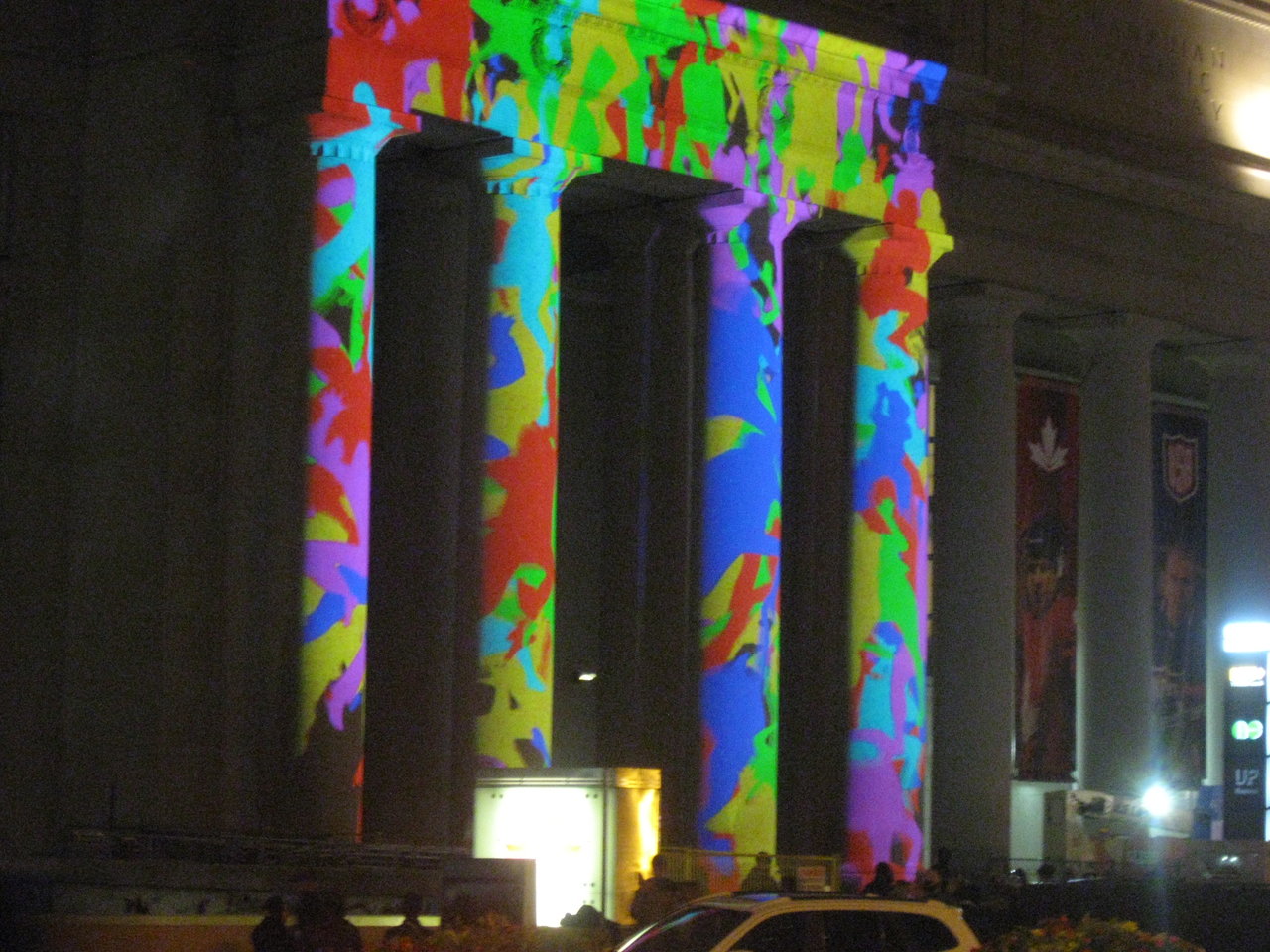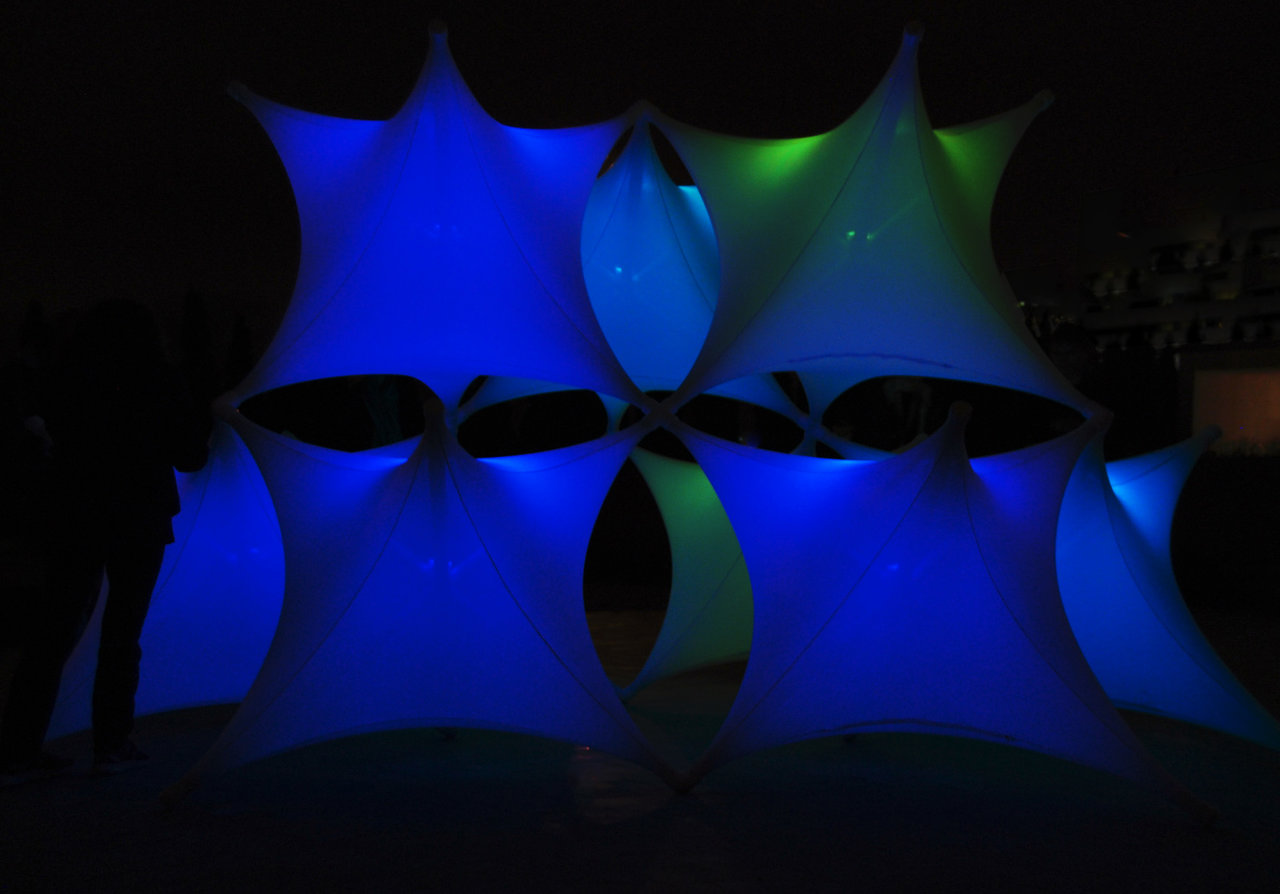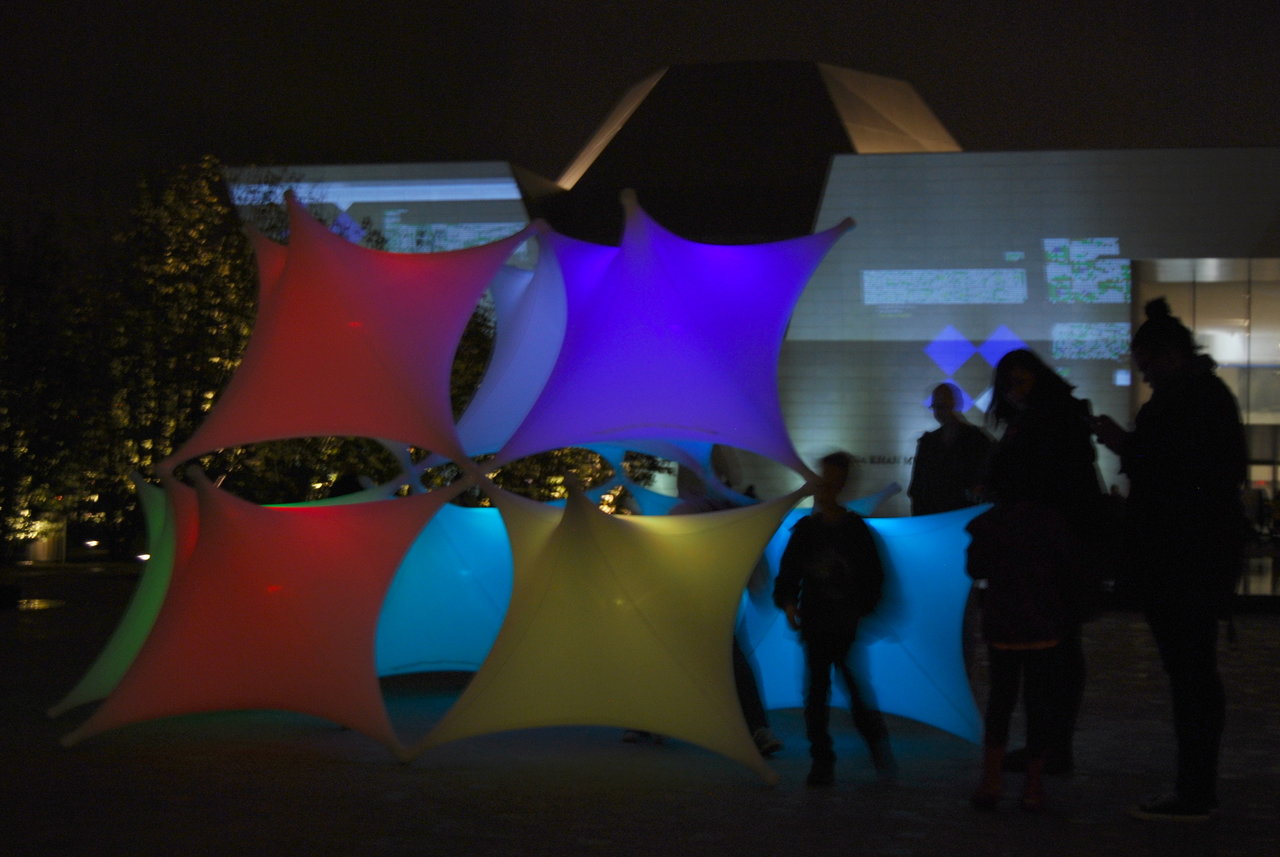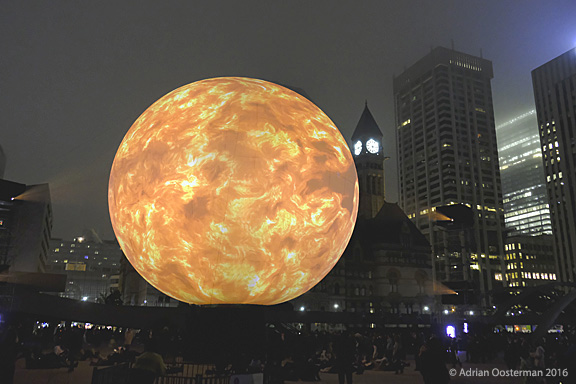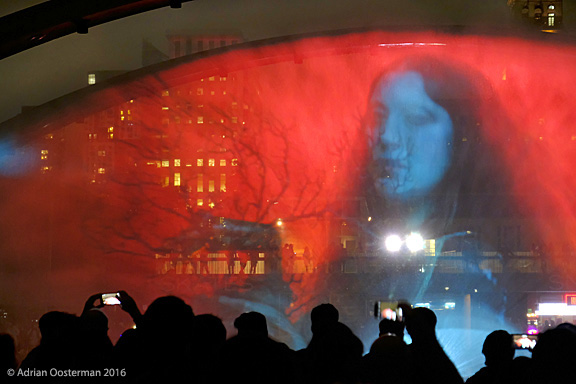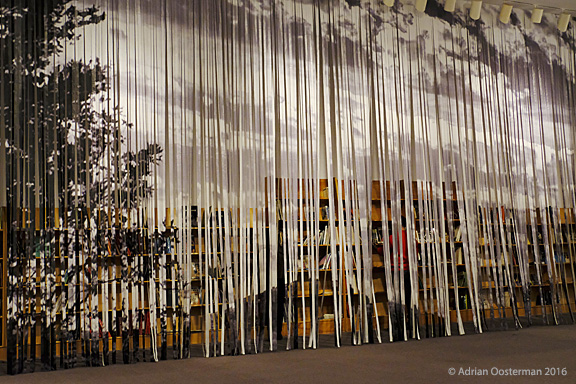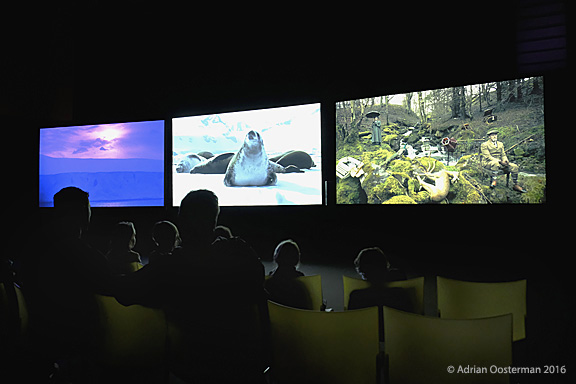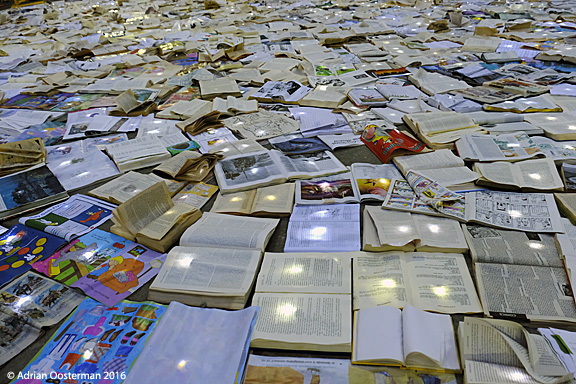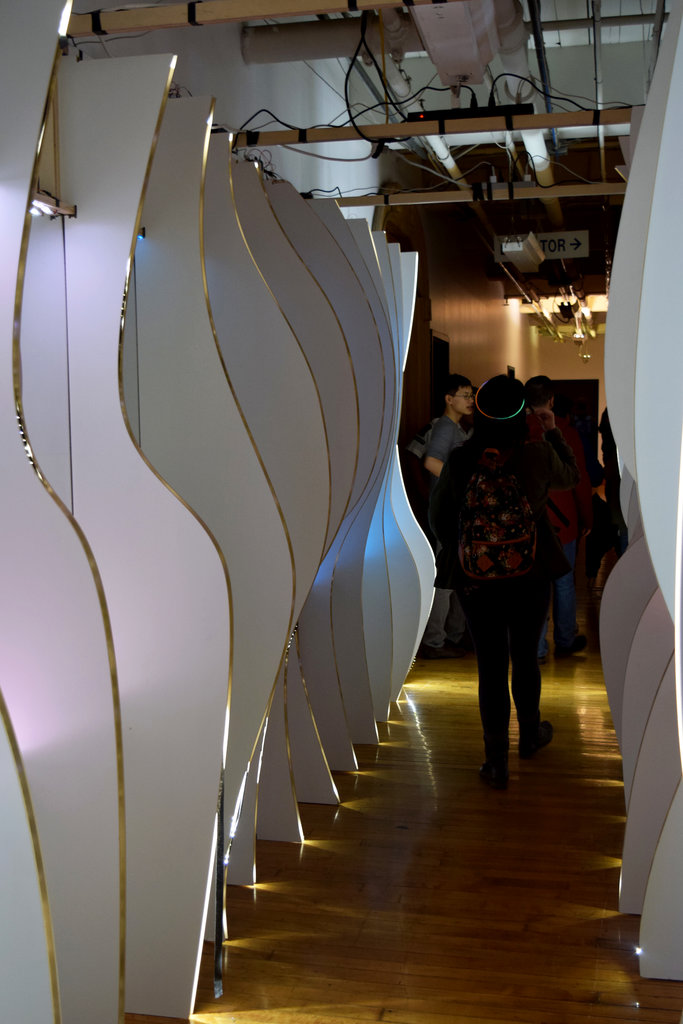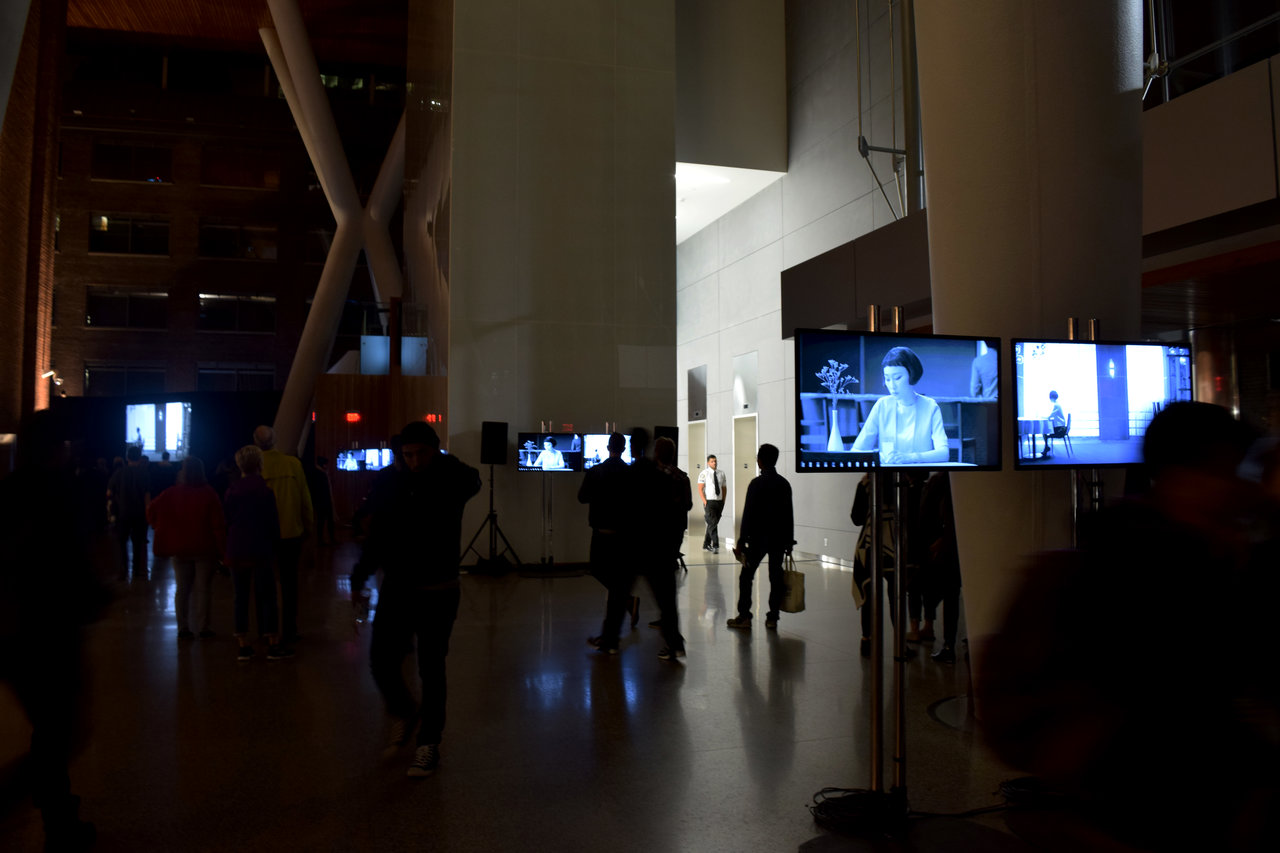Saturday, October 1, 2016, sunset to sunrise
Various locations in Toronto
PHIL ANDERSON, publisher/writer/photographer:
Despite the threat of rain I went out to experience Nuit Blanche once again. The streets downtown were crowed with others doing the same. I recall the first year rain had also been a treat but was then ignored as well. I started at City Hall and had decided to focus on the large curated projects rather than independent projects. At City Hall I saw my first big line up to get inside the rotunda to see Ocean by Philip Beesley.
Death of the Sun was impressive as was Pneuma by Floria Sigismondi at the reflecting pool. I continued down Bay St.to see The Guardians, by Vladimir Antaki and then to Everyone Thinks the Same Thoughts by Kurt at Commerce Court. Fallen Water – Niagara Escarpment was an impressive installation by Kevin Cooley at Brookfield Place.
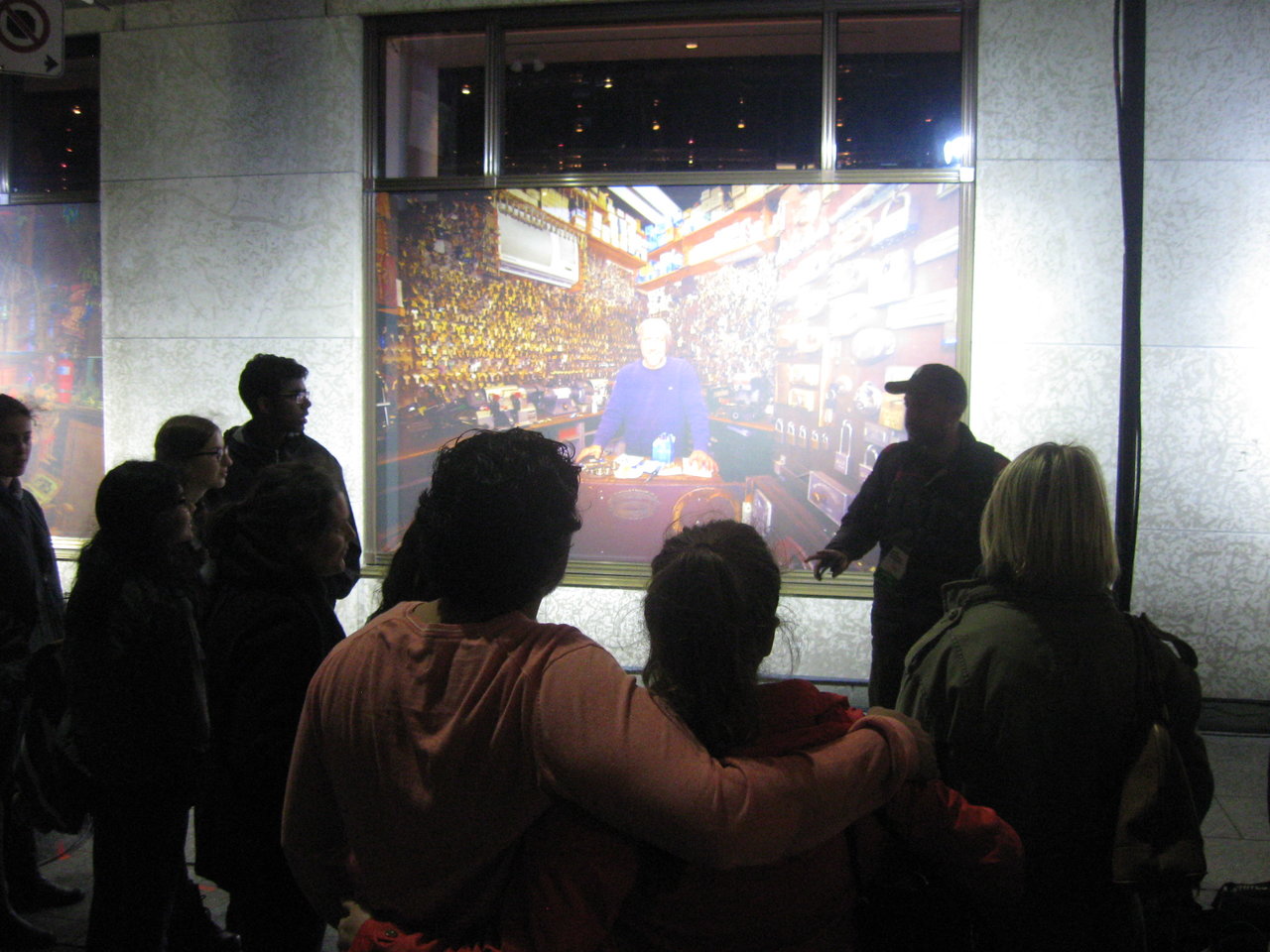 The Guardians by Vladimir Antaki
The Guardians by Vladimir Antaki
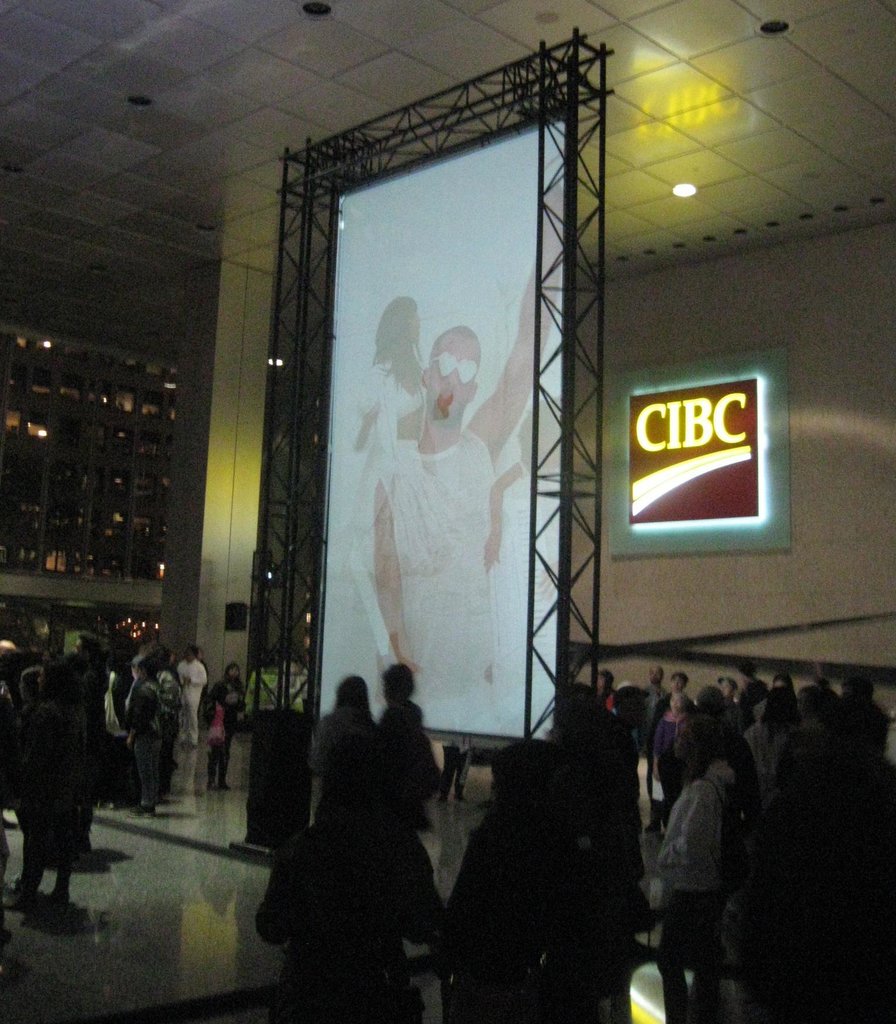 Everyone Thinks the Same Thought by Kurt
Everyone Thinks the Same Thought by Kurt
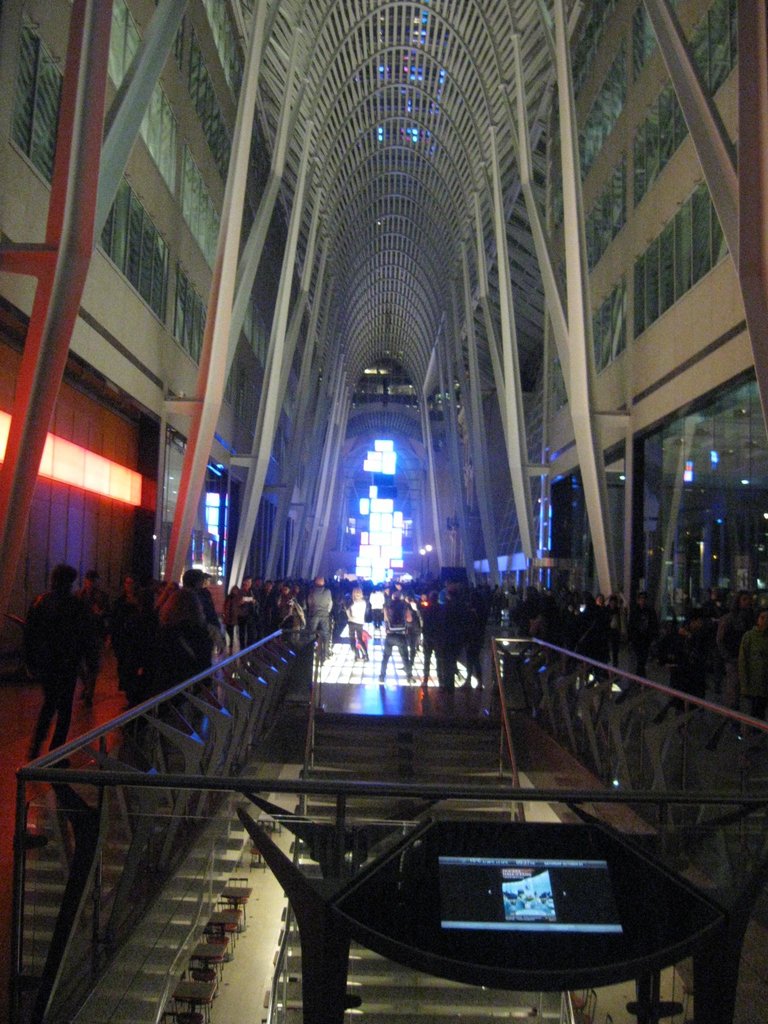 Fallen Water – Niagara Escarpment by Kevin Cooley
Fallen Water – Niagara Escarpment by Kevin Cooley
Making my way south I came upon Asalto by Daniel Canogar and I continued to a series of video installations and projections including Inuit Knowledge and Climate Change by Zacharias Kunuk & Dr. Ian Mauro, The Ghost of Modernity by Lixiviados. At the Power Plant Espace du Silence and finally Silent Dedication by Shary Boyle. It was good to sit and watch these videos but I would have preferred some more interactive experiences. Perhaps I would have found that at the Independent Projects.
Well there’s always next year.
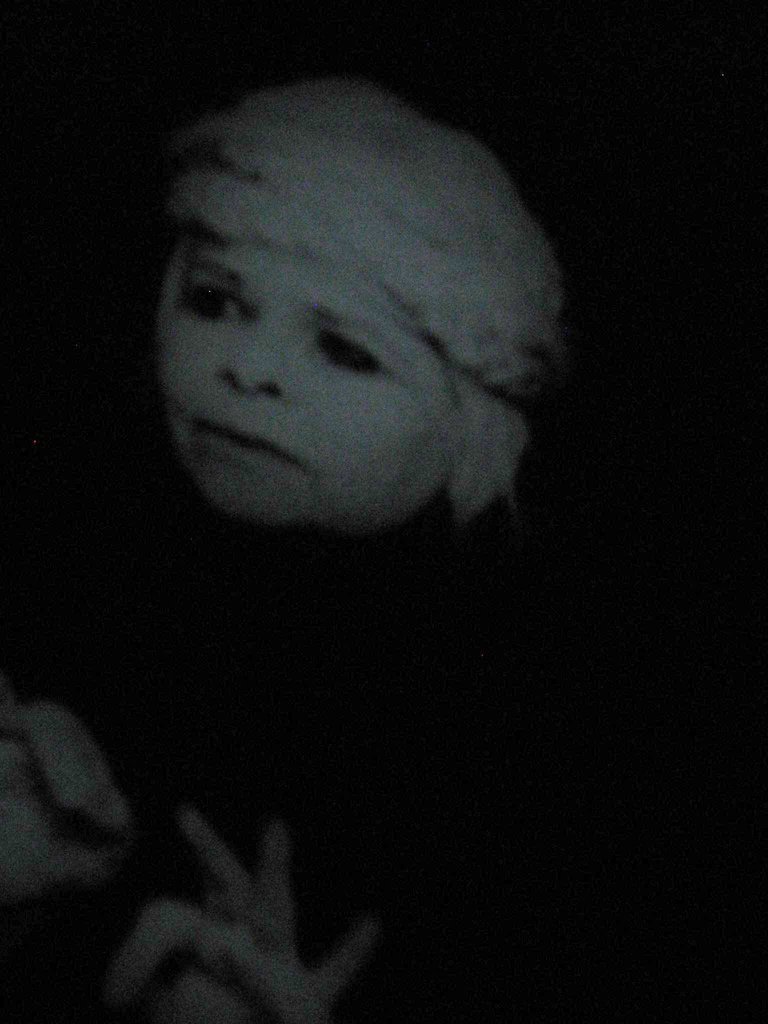 Silent Dedication by Shary Boyle
Silent Dedication by Shary Boyle
ANDRIY BILENKYY, writer/photographer
On the rainy, foggy night of Nuit Blanche, only illuminated objects could be seen clearly in the courtyard of the Aga Khan Museum. Among them, situated amidst the garden ponds, their surfaces dark, save the soft glitter of small multi-coloured water lamps, was Virginia Melnyk’s Sparks, an installation composed of several interconnected polygonal cells, each emitting a soft coloured light. The installation blended with the surroundings without losing its character. Its colourful abstract construction formed a bridge between the two buildings that dominated the landscape: the Ismaili Center, with its tiled glass dome, and the Aga Khan Museum, filled with elaborate arabesques, girih designs, tessellations made of many-pointed stars, and other coloured geometrical formations widely seen as characteristic of Islamic visual art.
But there was more to Sparks than its sensitivity to architectural and artistic context; unlike the museum exhibitions and the impressive structures that housed them, the installation encouraged the viewers to engage with it. The structure could be approached from all sides, and one could also climb inside of it, as many, in fact, did. The artist, braving the weather, was present at the location, handing out remote controls that allowed viewers to change the colour of individual cells; and many took advantage of the offer, flipping through red, blue, and yellow, testing their ability to alter the artwork’s appearance, and occasionally, challenging the previous viewers’ choice of colour.
Your correspondent also had the pleasure of interacting with the artwork before moving into the museum, where a concert by a Tuvan throat singing band Huun Huur Tu was taking place that night. And, as he departed to listen to the voices of the nomadic tents of southern Siberia, he noticed that, underscoring another way in which Sparks blended with their surroundings, a child and an adult climbed inside the installation, and stood there, staring upwards, as one could, perhaps, stand inside a yurt, looking through the smoke flap at the foggy sky glimmering with stars.
The author wishes to thank Ivan Petrov for the generous invitation to Huun Huur Tu.
JULIE MCNEILL, writer and ADRIAN OOESTERMAN photographer:
This year’s more condensed zones were both a blessing (less distance to travel) and a curse (less opportunity to discover independent shows on the way to other zones), but overall, I found that Nuit Blanche 2016 offered large-scale highlights like The Death of the Sun and Pneuma as well as a small gems like Browsing (Kelly Jazvac at David Mirvish Books).
There did seem to be more bureaucratic issues. For example, I was at the Design Exchange, waited in a small line to get in, then was directed into Vertigo Sea (John Akomfrah) — which was wonderful — but when we left there to go to The Body Behind the Body (Angelo Musco) we were directed to wait for an elevator (no stairs????) and when we got on it, it would only go to the main level. We explained that we were going to The Body Behind the Body and staff/volunteers said they needed a key for that. Got the key. Went up as far as Level 2 (the level we had started from several minutes earlier) where we were told to get off the elevator and wait… so a bunch of people were stuck in this hallway until the elevator finally returned… but no, they only wanted to take ‘media people’. Sigh. We waited for the elevator to return, which it finally did, and the ordeal was over. Gratefully the work of Angelo Musco is certainly worth the wait. Diverse and meticulous, his photographic/video images were projected onto 2 screens and reveal his composition of a butterfly or a forest made entirely out of naked bodies. The sheer amount of work is staggering but well worth it. If you ever have a chance be sure to see it. Ironically, when we left that room we were directed out into the trading floor balcony where we walk down stairs and end up in Vertigo Sea! Other “must go in this door only — must exit over there only” happened at Waiting (QRC West) and at the Bata Shoe Museum.
I always think of Nuit Blanche as a great adventure, but as far as art goes, it’s a ‘hit-or-miss’ thing. I enjoyed many projects in the “And the Transformation Reveals” zone curated by Camille Hong Xin, mainly because there was real attention to view-ability and scale of presentation.>
There’s a great audience for art in Toronto and there were crowds throughout the night. I went to all four curated zones plus 10 other projects. I want future artist participants in Nuit Blanche to understand that there will be crowds, so don’t put your art on the ground if at all possible. Light it. This is a nighttime event so it will be dark. If we can’t see it, we can’t like it. And try to make it ART — I didn’t consider the tractor-trailer load of grave liners as anything at all. Why was it included — especially in a curated zone? Lastly, this is a 12-hour event. Participants should commit to being there for the duration. I had a lovely conversation with Rosary Solimanto (Weight outside the Royal Conservatory of Music) and she was walking the whole time. Thanks Rosary. Art is sometimes heavy. You have to really believe in your work.
 Urban Syncopation at the Gardiner Museum
Urban Syncopation at the Gardiner Museum
 Silent Conversation, University of Toronto Schools
Silent Conversation, University of Toronto Schools
SIMON TERMINE, writer/photographer
Nuit Blanche has finished this weekend, and once again, the Downtown core was filled with people seeking out the numerous attractions and exhibitions. Likewise, the streets were alive with performers, artists, and spectators contributing the fun, vibrant atmosphere. My journeys took me to the area of Spadina and Richmond, where in addition to the interesting exterior shows, the “401 Richmond” gallery was clambering with people eager to see its installations: paintings, drawings, and sculptures of all sorts were placed throughout the historic site. Though this year’s variety was slightly smaller than previous years, it was no less impressive and awe-inspiring.
 Mapping People by Julie Cosgrove
Mapping People by Julie Cosgrove
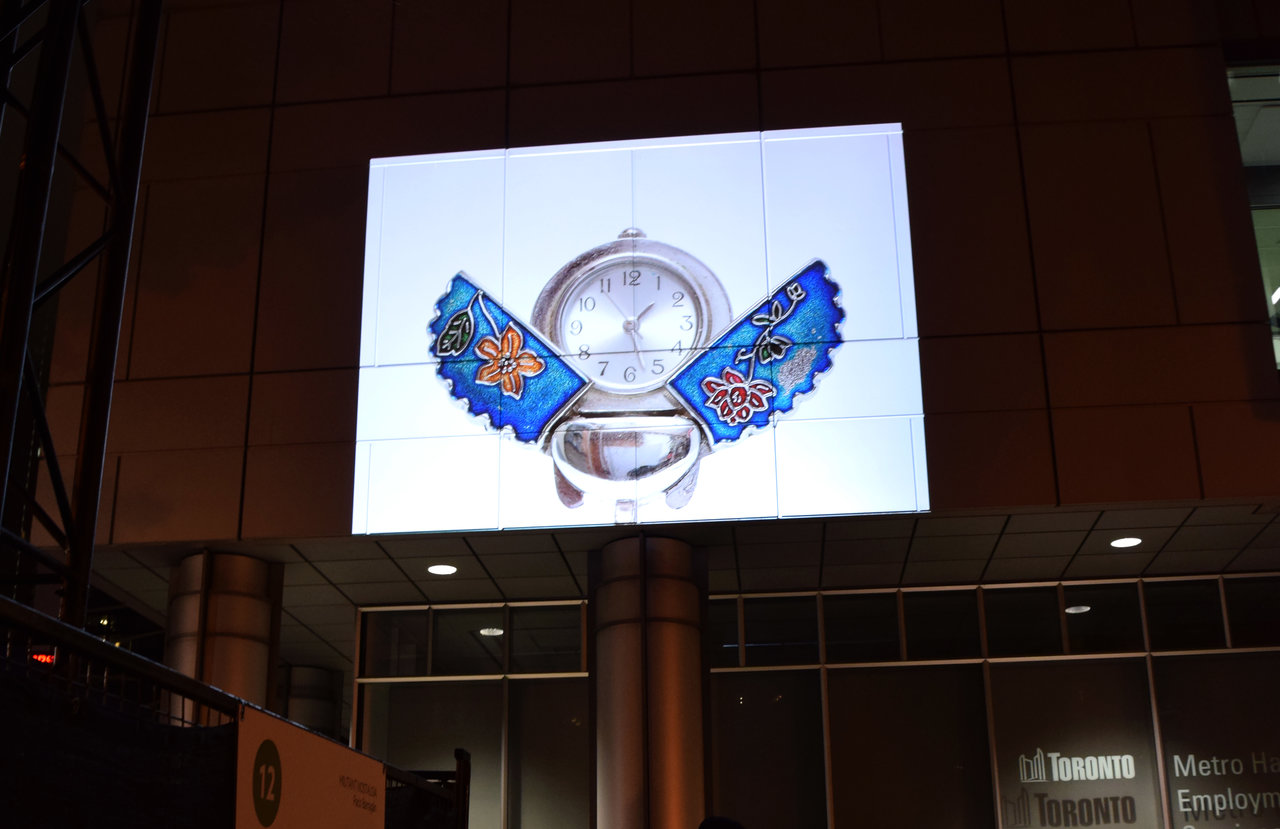 The Museum of Broken Watches by Trevor Mahovsky and Rhonda Weppler
The Museum of Broken Watches by Trevor Mahovsky and Rhonda Weppler

